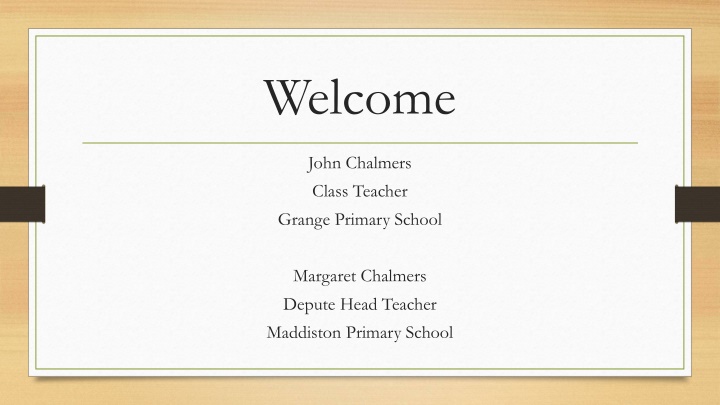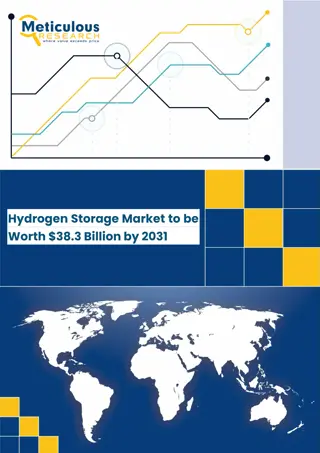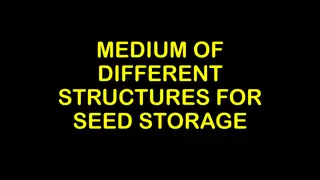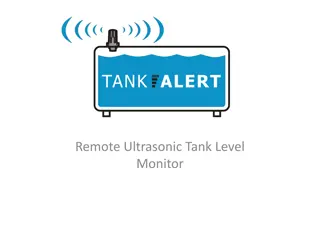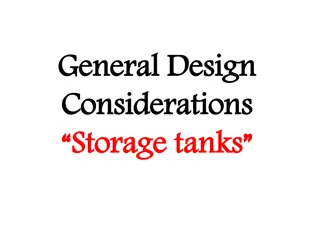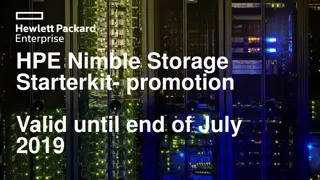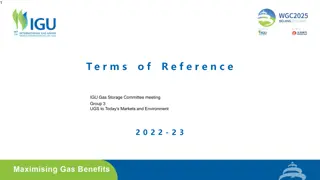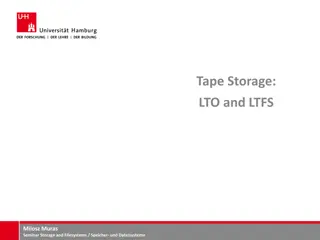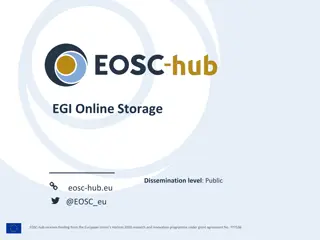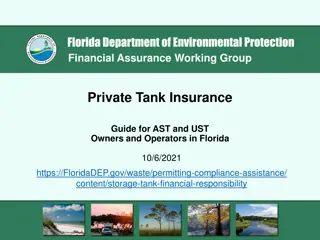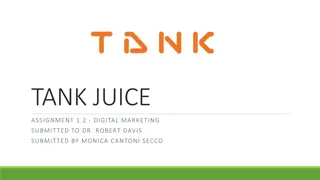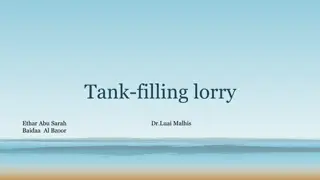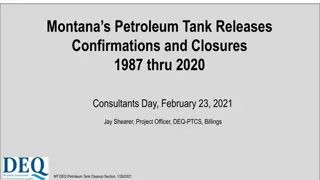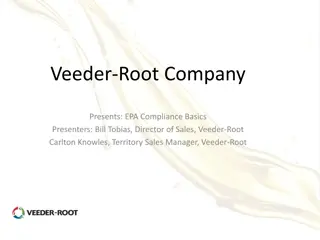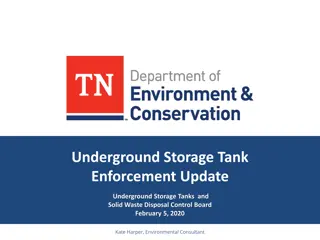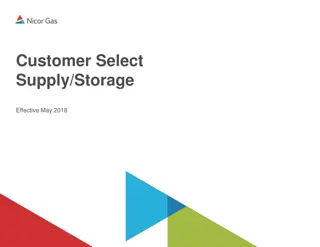Above-Ground Storage Tank Conclusions
Concluding insights on above-ground storage tanks, including engineering design ideas for storm surge prevention and protection from natural disasters. Explore innovative methods such as flood gates, elevated highways, and anchoring systems. Learn more about safeguarding ASTs and the Houston region from hurricane threats.
Download Presentation

Please find below an Image/Link to download the presentation.
The content on the website is provided AS IS for your information and personal use only. It may not be sold, licensed, or shared on other websites without obtaining consent from the author.If you encounter any issues during the download, it is possible that the publisher has removed the file from their server.
You are allowed to download the files provided on this website for personal or commercial use, subject to the condition that they are used lawfully. All files are the property of their respective owners.
The content on the website is provided AS IS for your information and personal use only. It may not be sold, licensed, or shared on other websites without obtaining consent from the author.
E N D
Presentation Transcript
Welcome John Chalmers Class Teacher Grange Primary School Margaret Chalmers Depute Head Teacher Maddiston Primary School
Tackling Bureaucracy in the Primary Classroom Focus on Planning and Assessment
Tackling Bureaucracy Key Messages from CfE Working Group Assessment judgements, particularly with BGE should be based on evidence drawn mainly from day to day teaching and learning. Tracking pupil progress and moderation is important; however there is no need to produce large folios of evidence to support this. Assessment within CfE is based on the exercise of professional judgement. Avoid excess planning based on assessing, recording and reporting at the level of individual E s and O s. Professional dialogue is key to improving learning. Paperwork should be kept to the minimum to support this process.
Education Scotland: Key Messages http://www.educationscotland.gov.uk/Images/TacklingBureaucracyPoster01 05415_tcm4-856034.pdf
Tackling Bureaucracy At times, planning approaches take up too much time because they are complicated and seek to do too much. For example, sometimes planning that seek to reflect progress through every individual E and O can lead to fragmentation of learning and insufficient depth of study. Sometimes planning has too many layers that, whilst intended to serve different purposes, are too cumbersome to be wholly useful.
Inspection Advice Note (2015-16) Key points - Emphasis on planning for progression, coherence and improving curriculum transitions Curriculum should be designed to raise the attainment of all learners Theme 1 Rationale and Design of the Curriculum Curriculum has a clear rationale based on shared values and learners entitlements and develops the 4 capacities Schools should have a clear strategy for raising attainment in literacy and numeracy Staff and pupil self-evaluation of children s progress in health and wellbeing Curriculum is based on the design principles: challenge, and enjoyment, depth, progression, relevance, coherence and personalisation and choice. Ensure coherence and progression to provide well-planned and joined up learning across the 4 contexts for learning.
Planning Tackling bureaucracy and meeting Education Scotland/HMIe Expectations How will we do this? Streamline and reduce planning Next Steps 1. Plan across the 4 contexts/aspects of learning (Curriculum Information Leaflets) 2. Plan with the children Big Floor Plans
We must plan across the 4 contexts of learning Staff continue to evaluate and further develop the curriculum to ensure all children benefit from their entitlement to a BGE. this includes ensuring coherent and progressive learning experiences, taking account of each curricular area. Learning within an interdisciplinary context, ethos and life of the school and opportunities for personal achievements need to be well considered to ensure they provide coherence and progression in learning. Education Scotland, June 2015
The Curriculum: the totality of all that is planned for children throughout their education BtC 3 Curriculum areas and subjects Interdisciplinary learning Ethos and life of the school as a community Opportunities for personal Achievement
Education Scotland Expectations: Ensure staff are delivering a coherent experience, providing progression and well- planned, joined up learning within the four aspects of the curriculum. June 2015
Overview and Progression Pathways A selection of curriculum areas per yr. (RME, Science & HWB) Used the Significant Aspects of Learning (SAL s) to identify the key skills and learning experiences Mapped the Es and Os linked to each significant aspect of learning across each stage. E.g. in literacy , science, HWB several Es and Os linked to SAL s. Considered the context of the school local landmarks, businesses, associations, partners Creating 1. Curriculum Overview for each discrete area 2.Progression Pathway for each discrete area
Planning Tracking Transitions 1. Clusters of Es and Os are bundled for IDL. 2. Teachers highlight the curriculum overviews to show progression through each discrete area. Literacy Science RME IDL ICT Maths Technologies Social Studies H & W Expressive Arts
Bundling!!! Examples of IDL Plans Bundling E s and O s Grange Primary School Falkirk
IDL Plan: Global Goals: Affordable and Clean Energy Curricular Area 1: Social Studies Curricular Area 2: Technologies Curricular Area 3: Science I can describe the major characteristic features of Scotland s landscape and explain how these were formed. SOC 2-07a Experiences and Outcomes Having analysed how lifestyle can impact on the environment and Earth s resources, I can make suggestions about how to live in a more sustainable way. TCH 2-02a Experiences and Outcomes By considering examples where energy is conserved, I can identify the energy source, how it is transferred and ways of reducing wasted energy. SCN 2-04a Experiences and Outcomes I can discuss the environmental impact of human activity and suggest ways in which we can live in a more environmentally- responsible way. I can investigate the use and development of renewable and sustainable energy to gain an awareness of their growing importance in Scotland or beyond. TCH 2-02 Through exploring non-renewable energy sources, I can describe how they are used in Scotland today and express an informed view on the implications for their future use. SCN 2-04b SOC 2-08a I can consider the advantages and disadvantages of a proposed land use development and discuss the impact this may have on the community. SOC 2-08b Having explored the ways journeys can be made, I can consider the advantages and disadvantages of different forms of transport, discussing their impact on the environment. SOC 2-09a Having explored my local area, I can present information on different places to live, work and relax and interesting places to visit. SOC 2-10a
R.M.E. Expressive Arts Health Nativity / Religious Service/ Assembly I am becoming aware of the importance of celebrations, festivals and customs in Christian people s lives. RME 0-03a I have experienced the energy and excitement of presenting/ performing for audiences and being part of an audience for other people s presentations/performances. EXA 0-01a Representing my class, school and/or wider community encourages my self-worth and confidence and allows me to contribute to and participate in society. HWB 0-12a Early I am becoming aware of the importance of celebrations, festivals and customs in religious people s lives. RME 0-06a I am developing an awareness of the ways in which Christians celebrate different times of year and can relate these to my own life and community. RME 1-03b I have experienced the energy and excitement of presenting/ performing for audiences and being part of an audience for other people s presentations/performances. EXA 1-01a Representing my class, school and/or wider community encourages my self worth and confidence and allows me to contribute to and participate in society. HWB 1-12a First I am developing an awareness of the ways in which followers of world religions celebrate different times of year and can relate these to my own life and community. RME 1-06b I can sing and play music from other styles and cultures, showing growing confidence and skill while learning about musical notation and performance directions. EXA 1-16a Through investigating the ways in which Christians mark major life events and times of year, I can explain key features of such festivals and celebrations. RME 2-03b I have experienced the energy and excitement of presenting/performing for audiences and being part of an audience for other people s presentations/performances. EXA 2-01a Representing my class, school and/or wider community encourages my self-worth and confidence and allows me to contribute to and participate in society. HWB 2-12a Second Through investigating and reflecting upon the ways in which followers of world religions mark major life events and times of year, I can explain key features of such festivals and celebrations. RME 2-06b I can sing and play music from a range of styles and cultures, showing skill and using performance directions, and/or musical notation. EXA 2- 16a
Curriculum Information Leaflets
Keeping Parents Informed A Curriculum Information Leaflet is sent home at the start of each new term. Which shows the range of activities over the 4 contexts for learning: IDL 2 discrete focus areas Personal Achievement Ethos and Life of the School
IDL - Big Floor Book Planning Step 1 - Sharing of Big Floor Plans and discussion Teachers identify the bundle of Es and Os Children help to create the context/theme for learning (guided by the teacher)
Content of the Big Floor Plans: Bundle of Es and OS What we know? What do we want to find out? How we would like to learn Make, Say, Write, Do ( A list of skills is added to help in this process, see examples.) Evidence of pupil assessment. (Key to this is the involvement of pupils adding to the Big Floor Plan. Make it prominent/important in the classroom. Encourage ownership of the plan and their learning.)
Tracking at the Grange: Grange and Blackness Primary Schools SLT Tracking Record of Attainment Session 2016 - 2017 Stage Primary Subject Area: Reading Name Additional Information InCAS 15-16 LAC EAL Form 7 SALT Form 4 Ed Psych SfL EP SWST score First Level Second level Third level Notes Chronological Age At risk of underachie ving without support On track to achieve: continue to monitor Operating beyond minimum level: requires challenge Comprehension Reading First name Surname Use of/Involveme nt of other services Date Achieved Date Achieved Date Achieved SIMD FSM Claire McGlynn Aug 2015
Thank You for Listening! john.chalmers@falkirk.gov.uk margaret.chalmers@falkirk.gov.uk Thanks to Claire McGlynn Head Teacher MPS
